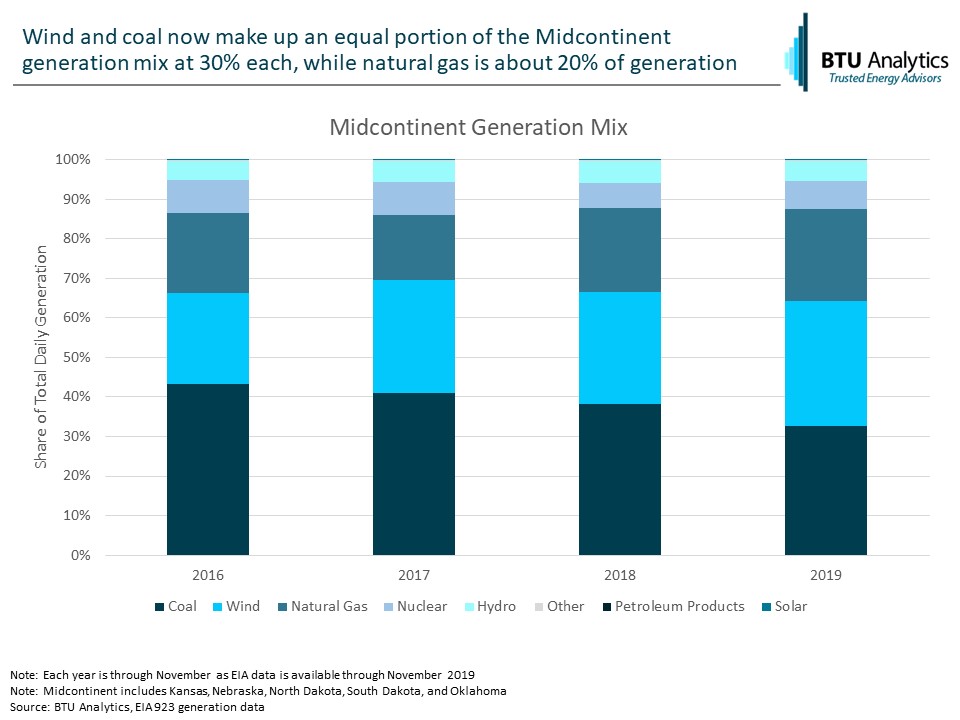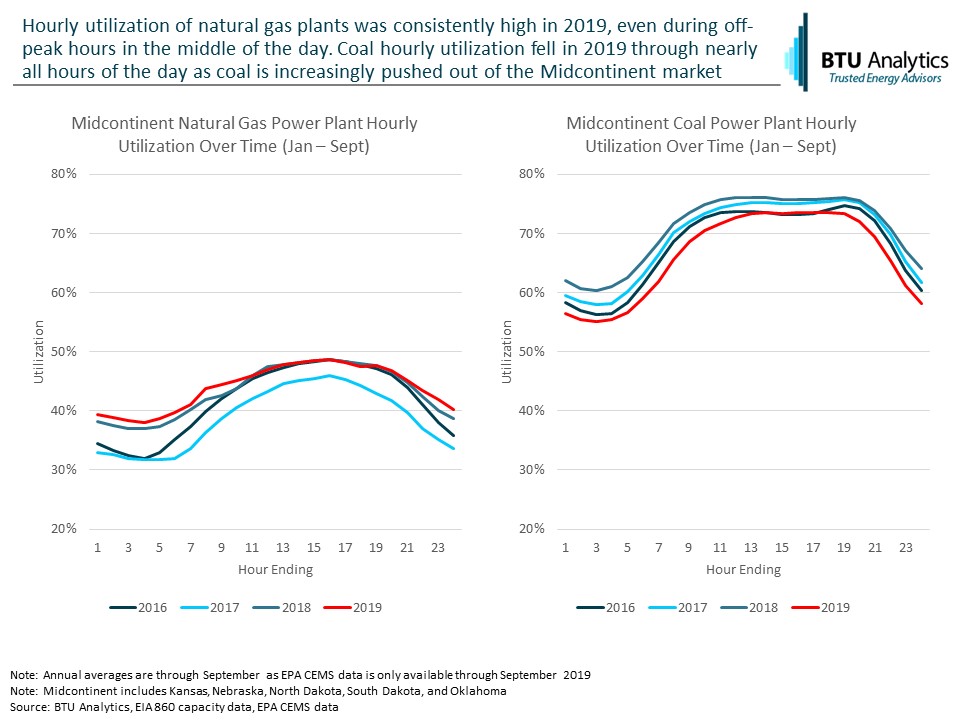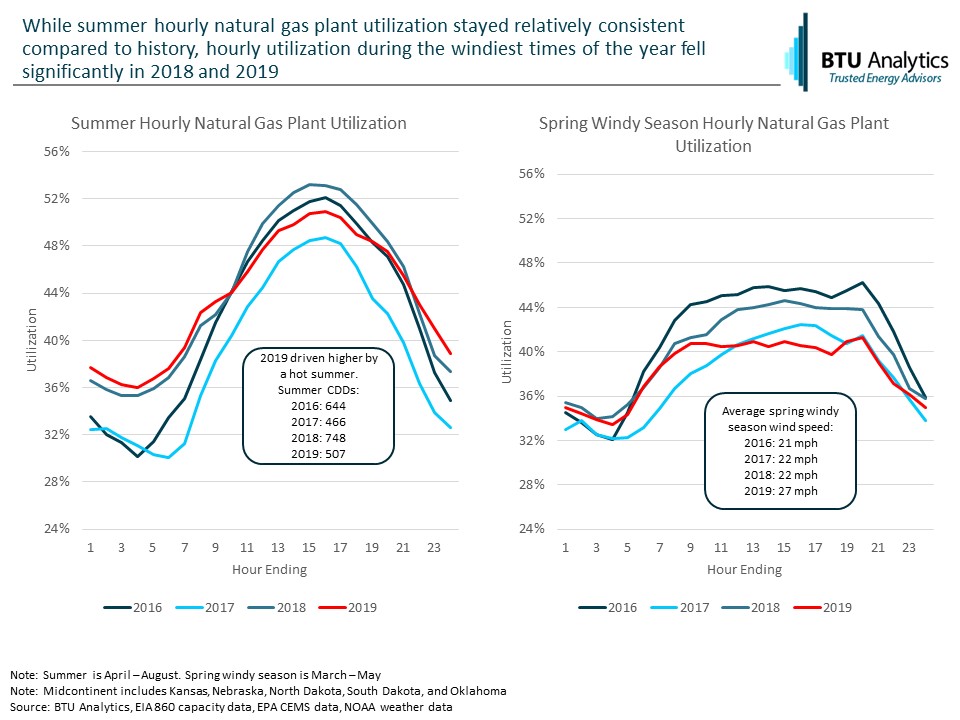As renewables build out continues across the United States, the impact of renewables on hydrocarbon generation is becoming more pronounced. While low natural gas prices have allowed natural gas to continue to make inroads against coal, wind generation and solar generation are impacting when and how natural gas plants get dispatched. Today’s energy market commentary will look at the changes in how hydrocarbon generation is being dispatched in the Midcontinent region on an hourly basis.
In the Midcontinent region (Kansas, Nebraska, North Dakota, South Dakota, and Oklahoma), hydrocarbon generation, wind, and solar generation increasingly compete for market share. In 2019, wind generation grew to 32% of the generation mix from just 23% in 2016. Natural gas generation has gained market share but at a much slower pace growing from 20% in 2016 to 23% in 2019. The combination of wind and natural gas generation has pushed coal generation down to just 33% of generation, compared to 43% in 2016. Solar generation in the Midcontinent has yet to see significant gains, but new projects across the region totaling in excess of 8 GW will add more pressure to the system in coming years.

While renewable capacity can provide generation while the sun is shining or the wind is blowing, electricity generation from renewables is ultimately at the whim of nature. In most cases, periods of high wind are during off-peak demand periods. During these times, generation sources that can easily be ramped up or ramped down to meet demand are necessary. BTU Analytics discussed the importance of hydrocarbon generation during peak hours in You’re Gonna Need a Bigger Battery. The charts below show hourly utilization over time for natural gas and coal power plants across the region. In the Midcontinent, annualized average hydrocarbon utilization has been resilient to the impact of renewables in the market.

Natural gas hourly generation grew during peak hours, compared to 2016, but remained in line with 2016 during off-peak hours, when renewables generation is highest. Coal hourly utilization fell in 2019 compared to history as coal generation is increasingly displaced by natural gas and renewables.
Over the course of a year, natural gas utilization is largely unchanged compared to history. But there is seasonality to renewable generation, particularly for wind. From March through May, daily average maximum wind speeds are higher than in the summer when the wind dies down. However, in the summer overall load is much higher from summer cooling demand. The chart below shows hourly utilization of gas plants during the summer and spring windy season in the Midcontinent.

Natural gas utilization was high in summer 2019 during the day and increased materially in the early morning hours. Summer 2019 was just a bit hotter than summer 2017 (the light blue line), but hourly utilization was significantly higher throughout the day. Low natural gas pricing supported increased natural gas generation and pushed coal generation lower allowing gas plants to run harder all summer long despite gains in wind generation.
Wind had a more pronounced impact on gas utilization during the windy season when load is much lower in the region. During the windy spring months, natural gas utilization was pushed lower during the day, while early morning utilization stayed in line with history. Off-peak utilization fell from 46% in 2016 to 41% in 2019. The decline in utilization is twofold. First, the spring windy season was the highest of the sample at 27 miles per hour. Additionally, wind capacity increased to 20 GW in spring 2019 from 13 GW in the spring of 2016. Not surprising, the gains in wind generation displaced both coal and gas generation in the spring of 2019.
As renewable generation continues to gain steam, natural gas generation will continue to face increased competition for market share not just during low demand periods as experience in the spring of 2019 but even into the summer as solar gains market penetration. Request a sample of BTU Analytics’ Henry Hub Outlook for additional regional analysis of the interplay between renewables, coal, and natural gas in the power market.








